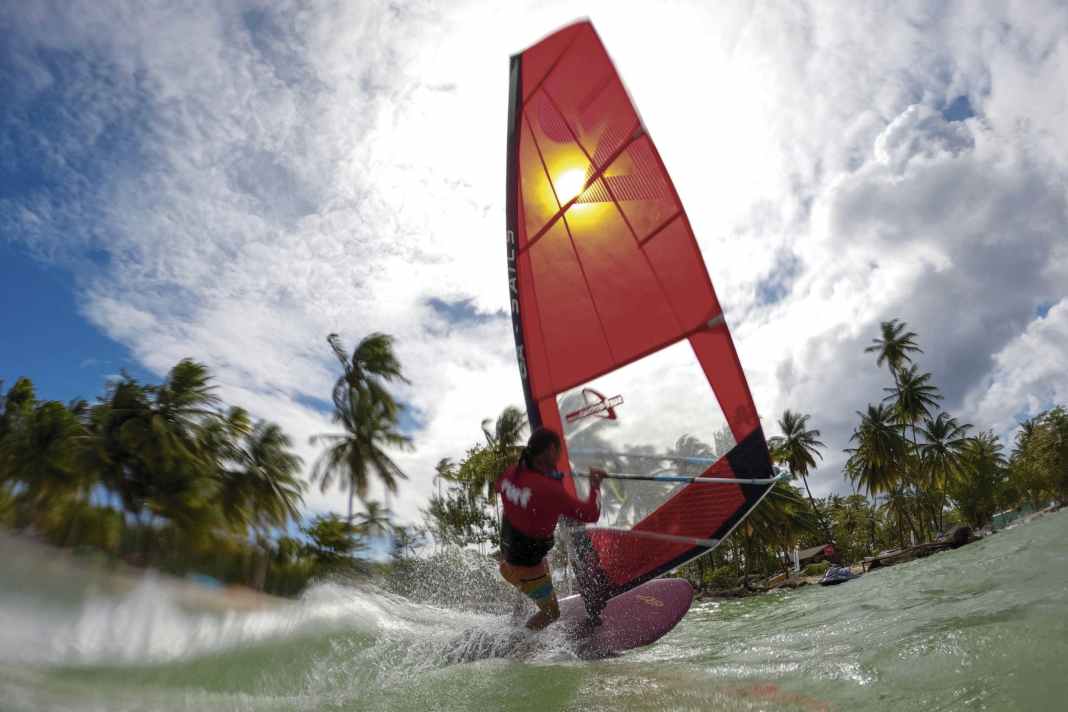





In Economy Class you are used to making savings. However, the cheaper GA Sails Pilot is not really a low-cost aircraft, because GunSails, Goya and Severne significantly undercut the entry-level price in the Freemove class. Does the Pilot have a few "premium" features? At first glance at least, it looks quite classy, the coloured mono film conceals the fact that little X-Ply has been used, but the coloured material is also said to be more UV-resistant than transparent films. However, it is also thinner and is stabilised by just four bats. 6.2 square metres is already quite large for a 4-batten sail, and the "missing" batten should have less of an effect in the smaller sizes.
Plenty of profile for gliding power
We have trimmed comparatively little loose leech into the sail as the optimum trim, as you lose too much planing power with a lot of pull. The resulting low belly is pulled fairly flat on the outhaul to stabilise the large sail area between the battens and give the sail good controllability. The profile starts flat at the mast, the battens touch the mast only slightly or not at all, depending on the fine adjustment. Trimmed in this way, it appears light and easy to handle on the one hand, but also glides quickly with average planing power.
In a direct speed comparison, it doesn't exactly press into the seat when accelerating and is closer to the wave sail at top speed Atlas than the more powerful 5-batten freemoving sails. At full planing speed, it is reasonably freeriding, stable and also easy to handle. In gybes it also feels light, shifts quickly and the batten rotation is hardly noticeable. In more demanding (freestyle) manoeuvres, the permanently present slight belly in the sail is more noticeable compared to the flatter hybrid, but this is not noticeable in normal gybes. When properly powered up, the centre of effort moves backwards faster than with the other sails, so you have to tighten your grip or re-rig. At 6.2 square metres, the Pilot is also the largest sail in the test field.
Surf summary of the GA-Sails Pilot
With only four battens, the Pilot is slimmed down in weight and price, making it handy and an acceptable freemoving sail in light to medium planing winds. The economical material dimensioning is roughly on a par with the Severne Convert. For dedicated windsurfers, we recommend the hybrid, which costs less than 10 per cent more.
Light, handy, easy to surf
Less stable in strong winds
Unusual to trim, thick SDM mast
Technical data GA-Sails Pilot 6.2
- Sail weight: 3.75 kg*
- Mast weight: 1.95 kg*
- Sleeve opening: 61 cm*
- Mast used: GA Masts 80 SDM 430; Price: 529 Euro
- Price: 779 Euro
- Info under: ga-windsurfing.com
*surf measurement
